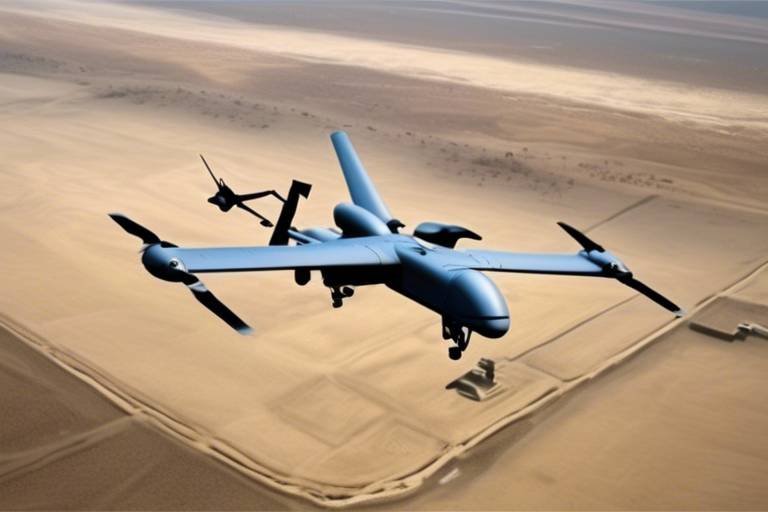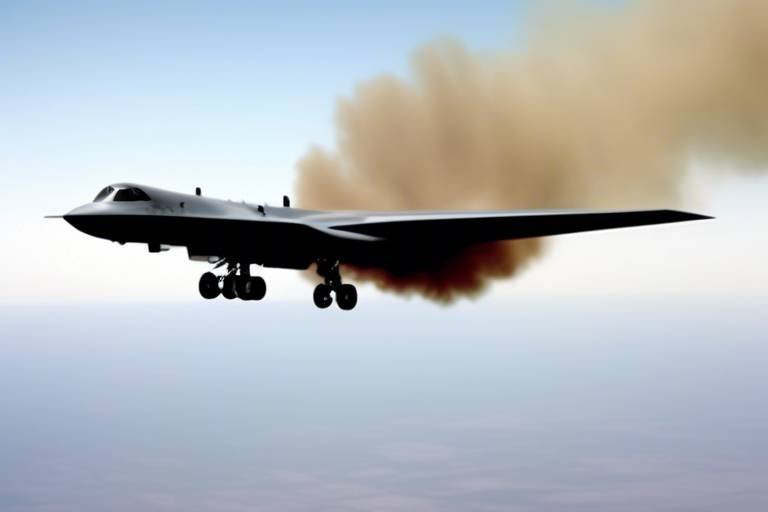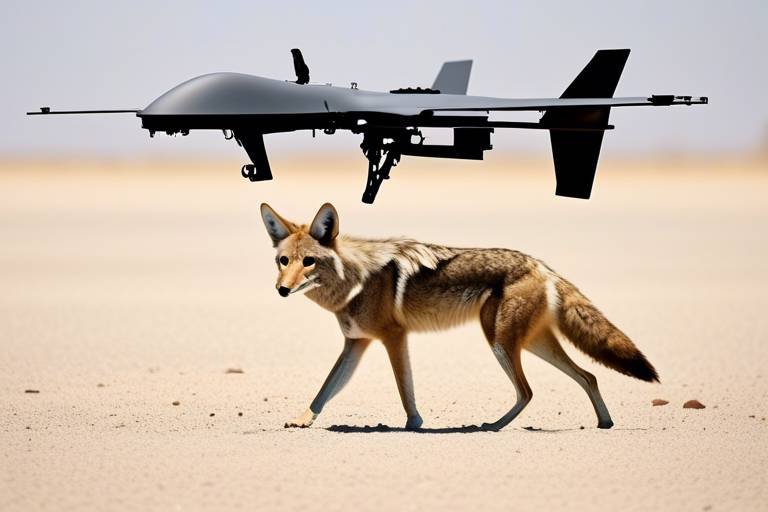Analyzing the Tactical Use of the Robotic Autonomous Systems in the U.S. Marine Corps
The integration of robotic autonomous systems within the U.S. Marine Corps marks a revolutionary shift in modern warfare. As conflicts evolve and become more complex, the need for innovative solutions has never been greater. Robotic systems, equipped with cutting-edge technology, are enhancing the capabilities of the Marine Corps, allowing for more efficient operations on the battlefield. This article delves into the tactical applications of these systems, examining their benefits, challenges, and the future implications they hold for military strategy.
The journey of robotic systems in the Marine Corps has been nothing short of fascinating. Beginning with rudimentary machines designed for simple tasks, the evolution has seen remarkable milestones. The early 2000s marked a significant turning point as the military began to recognize the potential of unmanned systems for reconnaissance and logistics. The introduction of drones and ground robots paved the way for a new era of warfare where human soldiers could be supported by machines in high-risk situations.
Technological advancements have played a crucial role in this evolution. From the development of remote-controlled vehicles to fully autonomous systems capable of making decisions, the Marine Corps has embraced these innovations. Today, robotic systems are not just tools; they are integral components of military strategy, enhancing operational effectiveness and reducing risks to personnel.
Today, the Marine Corps employs robotic systems in a variety of operational scenarios, showcasing their versatility and effectiveness. These systems are utilized in reconnaissance, logistics, and combat support, each application designed to enhance mission outcomes. For instance, in reconnaissance, drones can survey vast areas with precision, providing real-time intelligence that is crucial for decision-making.
When it comes to reconnaissance, the role of autonomous systems is pivotal. These machines can gather intelligence in environments that are too dangerous for human soldiers. Imagine a drone flying over hostile territory, capturing high-definition images and relaying crucial data back to command centers. This ability to operate in high-risk environments greatly minimizes human exposure to danger.
Recent technological advancements have further enhanced the surveillance capabilities of robotic systems. Innovations such as improved sensors and advanced data processing algorithms allow for real-time communication and situational awareness. These systems can now detect movement, identify targets, and even analyze patterns, making them invaluable assets on the battlefield.
Several case studies illustrate the successful deployment of robotic systems in reconnaissance missions. One notable example involved the use of a drone to survey enemy positions prior to a major operation. The intelligence gathered not only informed tactical decisions but also significantly reduced the potential for casualties. Such instances underscore the impact of robotic systems on mission success and strategic planning.
In addition to reconnaissance, robotic systems are revolutionizing logistics and supply chain management within the Marine Corps. By automating supply routes and managing inventory, these systems alleviate the logistical burden on personnel during missions. Imagine a fleet of autonomous vehicles transporting supplies over treacherous terrain, ensuring that troops receive the necessary resources without exposing them to danger.
Despite their numerous advantages, the implementation of robotic autonomous systems is not without challenges. Technical limitations, ethical considerations, and the need for comprehensive training for personnel pose significant hurdles. Understanding these challenges is essential for maximizing the effectiveness of these systems in military operations.
Deploying robotic systems comes with its own set of technical challenges. Issues such as battery life, terrain adaptability, and overall system reliability in combat situations can hinder performance. For instance, a drone might struggle to maintain flight in adverse weather conditions or rugged landscapes, which could compromise mission objectives.
The use of autonomous systems in warfare also raises important ethical questions. Concerns about accountability and decision-making processes are paramount. Who is responsible if a robotic system makes a mistake? The potential for unintended consequences adds another layer of complexity, necessitating a thorough examination of the ethical implications of these technologies.
Looking ahead, the future of robotic systems in the Marine Corps is promising. Emerging technologies, such as artificial intelligence and machine learning, are set to further enhance their capabilities. As these systems become more sophisticated, we can expect them to play an even more integral role in military strategy, potentially transforming the landscape of modern warfare.
- What are robotic autonomous systems?
Robotic autonomous systems are machines that can operate independently or semi-independently, often equipped with sensors and artificial intelligence to perform tasks without direct human control.
- How are these systems used in the Marine Corps?
The Marine Corps employs these systems for reconnaissance, logistics, and combat support, enhancing mission effectiveness and reducing risks to personnel.
- What are the main challenges of implementing robotic systems?
Challenges include technical limitations, ethical considerations, and the need for comprehensive training for military personnel.
- What does the future hold for robotic systems in the military?
Future advancements in technology, particularly in artificial intelligence, are expected to enhance the capabilities and applications of robotic systems in military operations.

The Evolution of Robotic Systems in the Marine Corps
The journey of robotic systems within the U.S. Marine Corps is nothing short of fascinating. It’s a tale woven with innovation, necessity, and a vision for the future of warfare. Historically, the concept of using machines to assist in military operations isn't new. However, the Marine Corps has been at the forefront of integrating these technologies into their operational framework, adapting to the ever-changing landscape of modern combat.
In the early days, the idea of robotics was more fiction than fact. However, as technology progressed, the military began to recognize the potential of these systems. The first significant milestone came in the late 20th century when the Marine Corps started experimenting with unmanned aerial vehicles (UAVs). These early UAVs, though rudimentary by today's standards, laid the groundwork for what would become a robust suite of robotic systems designed for various tactical applications.
Fast forward to the 21st century, and we see a dramatic shift in the capabilities and deployment of robotic systems. The Global War on Terror prompted the Marine Corps to accelerate its adoption of robotic technologies. The introduction of systems like the PackBot and Dragon Runner showcased the versatility of robotic units in explosive ordnance disposal and reconnaissance missions. These systems not only enhanced operational effectiveness but also significantly reduced the risk to human life in dangerous environments.
As we moved into the 2010s, advancements in artificial intelligence (AI) and machine learning began to revolutionize the way the Marine Corps utilized robotic systems. The integration of AI allowed for more sophisticated decision-making processes, enabling these systems to operate more autonomously. For instance, the RoboBee project, which aimed to create small, flying drones inspired by bees, demonstrated the potential for innovative surveillance and reconnaissance capabilities.
Today, the Marine Corps employs a diverse array of robotic systems, ranging from ground-based vehicles to aerial drones. Each of these systems is designed with specific tactical roles in mind, enhancing the overall operational capability of the Corps. The evolution of these robotic systems can be summarized in the following table:
| Year | Milestone | Description |
|---|---|---|
| 1990s | Introduction of UAVs | Early experiments with unmanned aerial vehicles for reconnaissance. |
| 2000s | Deployment of PackBot | Used for explosive ordnance disposal and reconnaissance in combat zones. |
| 2010s | AI Integration | Advancements in AI led to more autonomous and intelligent robotic systems. |
| 2020s | Diverse Robotic Applications | Wide range of robotic systems for logistics, surveillance, and combat support. |
As we look ahead, the evolution of robotic systems in the Marine Corps is likely to continue at an accelerated pace. With ongoing research and development, the future promises even more advanced technologies that will redefine the landscape of military operations. The integration of robotic systems not only enhances the efficiency of missions but also opens up new possibilities for tactical strategies in an increasingly complex battlefield.
- What are robotic autonomous systems?
Robotic autonomous systems are machines that can operate independently or with minimal human intervention, often equipped with AI and advanced sensors. - How have robotic systems changed military operations?
They have improved reconnaissance, logistics, and combat support, reducing risks to personnel and increasing operational efficiency. - What are some challenges in deploying robotic systems?
Challenges include technical limitations, ethical considerations, and the need for comprehensive training for personnel. - What is the future of robotic systems in the Marine Corps?
The future includes advancements in AI and machine learning, leading to more capable and versatile robotic applications in warfare.
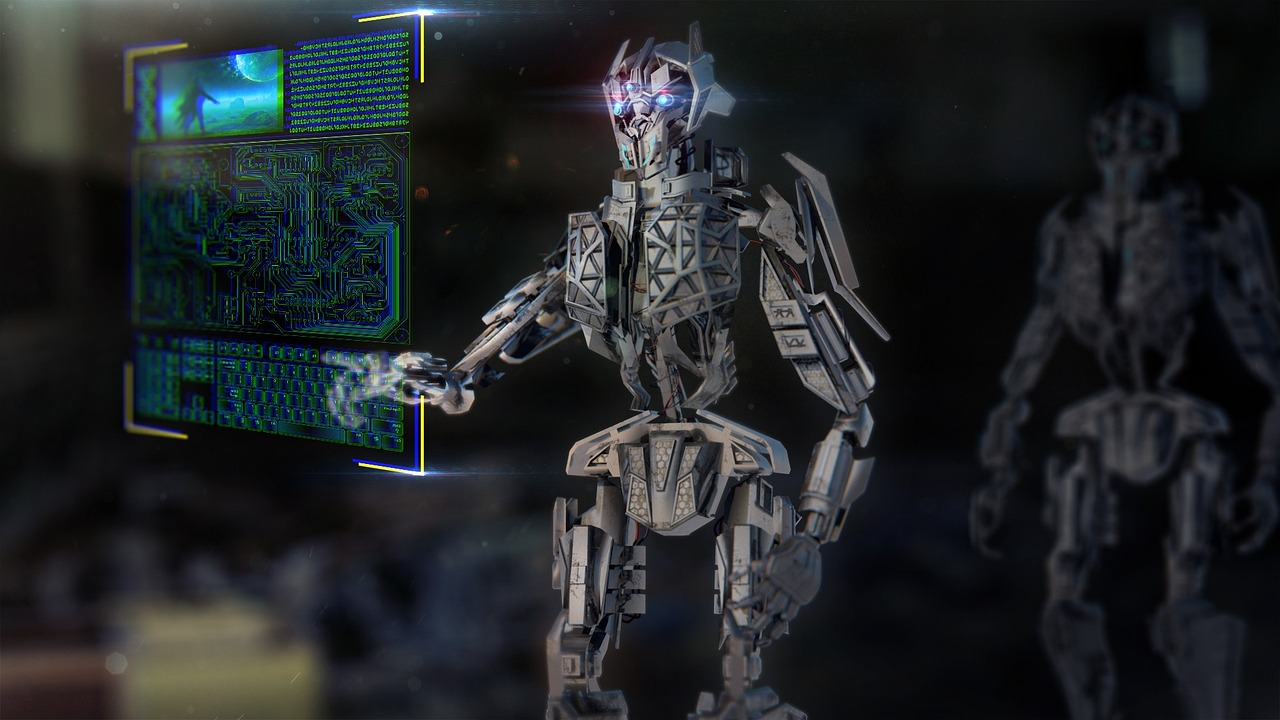
Current Applications of Autonomous Systems
The integration of robotic autonomous systems within the U.S. Marine Corps has revolutionized operational capabilities across various domains. These systems are not just fancy gadgets; they represent a significant leap in how military operations are conducted. From reconnaissance to logistics and even combat support, the versatility of these autonomous machines enhances mission outcomes and changes the game on the battlefield.
One of the most prominent applications of these systems is in reconnaissance and surveillance. Imagine sending a drone into enemy territory to gather intel while keeping your troops safe at a distance. This is not just a fantasy; it’s happening now. Autonomous systems are equipped with advanced sensors and cameras that allow them to collect critical data without putting human lives at risk. They can scout out enemy positions, monitor troop movements, and identify potential threats in real time. This capability is invaluable in modern warfare, where information is power.
In high-stakes environments, the ability to gather intelligence without exposing personnel to danger is a game-changer. Autonomous systems can operate in areas that are too risky for human soldiers, such as zones with high enemy activity or hazardous conditions. For instance, drones can fly over hostile territories, capturing video footage and thermal images, which are then processed and analyzed to provide actionable intelligence. This not only enhances situational awareness but also allows commanders to make informed decisions quickly.
Recent advancements in technology have significantly improved the surveillance capabilities of these robotic systems. With enhanced sensors and data processing capabilities, these machines can analyze vast amounts of information in seconds. Real-time communication features ensure that intelligence is shared instantly, allowing for swift tactical adjustments. The integration of artificial intelligence further boosts their efficiency, enabling autonomous systems to detect anomalies and potential threats without human intervention. This level of sophistication is crucial in today’s fast-paced combat scenarios.
To understand the impact of these systems, let’s look at some real-world examples. In one notable mission, a squadron of drones was deployed to monitor an enemy stronghold. The drones successfully identified troop movements and supply routes, providing critical information that led to a successful operation. Such instances showcase how robotic systems are not just tools, but essential components of strategic planning and execution in military operations.
In addition to reconnaissance, autonomous systems play a vital role in logistics and supply chain management. The Marine Corps faces immense logistical challenges, especially in combat zones where resupply missions are fraught with danger. Robotic systems can transport supplies, equipment, and even medical aid to remote locations, drastically reducing the logistical burden on personnel. This capability not only enhances efficiency but also allows human resources to focus on more critical combat roles.
For example, autonomous ground vehicles are being used to deliver supplies directly to the front lines. These vehicles can navigate complex terrains and avoid obstacles, ensuring that essential resources reach their destination safely and on time. By automating these processes, the Marine Corps can maintain operational momentum without overextending their human resources.
In summary, the current applications of robotic autonomous systems in the U.S. Marine Corps are vast and varied. They enhance reconnaissance and surveillance efforts while streamlining logistics and supply chain operations. As technology continues to evolve, the potential for these systems to further transform military operations is immense. The question remains: how far can we push the boundaries of what these machines can achieve?
- What are robotic autonomous systems?
Robotic autonomous systems are machines that can operate independently to perform tasks, often using artificial intelligence and advanced sensors. - How are these systems used in reconnaissance?
They are deployed to gather intelligence in high-risk areas, providing real-time data without risking human lives. - What are the benefits of using autonomous systems in logistics?
These systems improve efficiency, reduce the logistical burden on personnel, and ensure timely delivery of supplies in combat zones. - What challenges do robotic systems face?
Challenges include technical limitations, ethical considerations, and the need for comprehensive training for personnel.

Reconnaissance and Surveillance
In the ever-evolving landscape of modern warfare, play crucial roles in shaping tactical decisions and operational success. The integration of robotic autonomous systems within the U.S. Marine Corps has revolutionized how these missions are conducted. Imagine sending a machine into the heart of enemy territory, equipped with advanced sensors and data-gathering capabilities, all while keeping human soldiers out of harm's way. This is not just a futuristic dream; it's the reality of today's battlefield.
Robotic systems, such as drones and unmanned ground vehicles (UGVs), are designed to operate in environments that are often too dangerous or inaccessible for human personnel. These systems can gather vital intelligence, monitor enemy movements, and provide real-time data to commanders, enhancing situational awareness. For instance, during a reconnaissance mission, a drone can fly over hostile terrain, capturing high-resolution images and thermal data, which are then analyzed to inform strategic decisions. The ability of these machines to operate autonomously or under remote control allows for a flexible approach to gathering intelligence.
One of the most significant advantages of using robotic systems for reconnaissance is their ability to minimize risk. Traditional surveillance methods often involve sending human scouts into potentially lethal situations. In contrast, robotic systems can traverse dangerous areas without putting lives at stake. This capability is especially critical in high-risk environments, where the stakes are high, and the margin for error is slim. The U.S. Marine Corps has successfully utilized these systems in various operations, demonstrating their effectiveness in gathering actionable intelligence while preserving the safety of personnel.
The technological advancements in robotic systems are nothing short of remarkable. Today's surveillance drones are equipped with cutting-edge features that enhance their operational capabilities. These innovations include:
- Improved Sensors: Modern drones come with high-definition cameras, infrared sensors, and advanced radar systems that allow for detailed imaging and tracking of targets.
- Data Processing: Real-time data processing capabilities enable these systems to analyze information on the fly, providing immediate insights to commanders.
- Real-Time Communication: Enhanced communication features allow for seamless data transfer between the robotic systems and command centers, ensuring that decision-makers have the latest information at their fingertips.
These technological innovations not only improve the effectiveness of reconnaissance missions but also streamline operations, allowing for quicker responses to emerging threats. The data gathered by these systems can be crucial in shaping military strategies, as they provide a clearer picture of the battlefield.
There have been numerous instances where robotic systems have made a significant impact on reconnaissance efforts. For example, during Operation Enduring Freedom, the Marine Corps deployed drones that successfully identified enemy positions and movements, leading to more informed tactical decisions. Another notable case occurred in urban combat scenarios, where ground robots were used to navigate through complex environments, gathering intelligence that would have been impossible to obtain without risking human lives.
These case studies illustrate not only the effectiveness of robotic systems in reconnaissance but also their potential to change the dynamics of military operations. By reducing human exposure to danger and providing valuable intelligence, these systems are redefining how the Marine Corps approaches surveillance and reconnaissance missions.
- What types of robotic systems are used for reconnaissance?
The U.S. Marine Corps utilizes various robotic systems including drones, unmanned ground vehicles (UGVs), and aerial surveillance platforms for reconnaissance missions. - How do robotic systems enhance safety during reconnaissance missions?
By deploying robotic systems, the Marine Corps minimizes the risk to human personnel, as these machines can operate in high-risk environments without putting lives in danger. - What technological advancements have improved reconnaissance capabilities?
Innovations such as improved sensors, real-time data processing, and advanced communication systems have significantly enhanced the capabilities of robotic systems in reconnaissance. - Can robotic systems operate autonomously?
Yes, many robotic systems are designed to operate autonomously, allowing them to gather intelligence without direct human control in real-time.

Technological Innovations in Surveillance
The landscape of warfare is rapidly evolving, and technological innovations in surveillance are at the forefront of this transformation, particularly within the U.S. Marine Corps. As the need for real-time intelligence becomes increasingly critical, robotic autonomous systems are being equipped with advanced technologies that enhance their operational capabilities. Imagine a battlefield where information is not just gathered, but analyzed and disseminated in the blink of an eye. This is the reality that modern surveillance technologies are creating.
One of the most significant advancements in surveillance technology is the integration of high-resolution sensors. These sensors allow robotic systems to capture detailed imagery and data, providing commanders with comprehensive situational awareness. For instance, thermal imaging sensors enable these systems to operate effectively at night or in low-visibility conditions, ensuring that no enemy movement goes undetected. The ability to see through darkness or obscured environments is akin to having a superpower in a world where information is the ultimate weapon.
Another exciting development is the use of data processing algorithms that can analyze vast amounts of information in real-time. These algorithms can identify patterns, detect anomalies, and even predict potential threats before they materialize. This capability not only speeds up decision-making processes but also significantly reduces the cognitive load on human operators. Imagine having a digital assistant that not only reports what it sees but also interprets the data and provides actionable insights—this is the future of surveillance in military operations.
Moreover, advancements in real-time communication technology have revolutionized how data is transmitted from the battlefield to command centers. With the deployment of secure communication channels, information can be shared instantaneously, allowing for rapid responses to emerging threats. This immediacy is crucial in combat scenarios where every second counts. The ability to relay information without delay can mean the difference between mission success and failure.
To illustrate the impact of these innovations, consider the following table showcasing some of the key technological advancements in surveillance systems:
| Technology | Description | Impact on Surveillance |
|---|---|---|
| High-Resolution Sensors | Advanced imaging technologies that capture detailed visual data. | Enhanced situational awareness in various conditions. |
| Data Processing Algorithms | Software that analyzes data for patterns and anomalies. | Faster decision-making and threat prediction. |
| Real-Time Communication | Secure channels for instant data transmission. | Immediate response capabilities in combat scenarios. |
As we look to the future, the potential for further innovations in surveillance technology is immense. The combination of artificial intelligence and machine learning could lead to even more sophisticated systems capable of autonomous decision-making. However, with these advancements come challenges, including the need for robust training programs for personnel and the ethical implications of deploying such technologies in warfare.
In conclusion, the technological innovations in surveillance are not just enhancing the capabilities of robotic autonomous systems; they are redefining the very nature of modern warfare. As the U.S. Marine Corps continues to integrate these advancements, the battlefield will become increasingly dominated by data-driven strategies that prioritize speed, accuracy, and safety. The future is not just about fighting battles; it's about winning them with intelligence.
- What are robotic autonomous systems?
Robotic autonomous systems are machines that can operate independently to perform tasks such as surveillance, reconnaissance, and logistics without direct human control.
- How do high-resolution sensors improve surveillance?
High-resolution sensors provide detailed imagery that enhances situational awareness, allowing military personnel to monitor and assess environments more effectively.
- What role does data processing play in modern surveillance?
Data processing algorithms analyze large volumes of information quickly, helping to identify patterns and potential threats, thus aiding in faster decision-making.
- Are there ethical concerns related to robotic surveillance?
Yes, ethical concerns include accountability for decisions made by autonomous systems and the potential for unintended consequences during military operations.

Case Studies of Successful Reconnaissance Missions
When we think about the battlefield, our minds often conjure images of soldiers charging forward, but in today's modern warfare, the role of technology has dramatically shifted the landscape. One of the most significant advancements has been the use of robotic autonomous systems in reconnaissance missions. These systems have not only enhanced the effectiveness of military operations but have also significantly reduced the risks faced by personnel. Let's delve into a few remarkable case studies that highlight the successful deployment of these robotic systems in real-world scenarios.
One standout example comes from a reconnaissance mission in a conflict zone where traditional methods were proving too dangerous. The Marine Corps deployed a small unmanned aerial vehicle (UAV) equipped with advanced sensors and cameras. This UAV was tasked with gathering intelligence on enemy movements without putting any human lives at risk. The result? The UAV successfully identified enemy positions and relayed that information back to command in real-time, allowing for strategic planning and execution of operations. This not only saved lives but also demonstrated how autonomous systems could provide a tactical advantage in high-stakes situations.
Another compelling case involves the use of ground-based robotic systems during a surveillance operation in urban terrain. The Marine Corps utilized a robotic ground vehicle that was designed to navigate complex environments while carrying high-resolution cameras and thermal imaging equipment. This vehicle was able to traverse through narrow alleys and around obstacles, gathering crucial intelligence on enemy hideouts without drawing attention. The data collected was instrumental in planning a successful mission that led to the neutralization of a significant threat in the area.
Moreover, a notable example of collaboration between human operators and robotic systems can be seen in a recent joint exercise. Here, the Marine Corps integrated multiple autonomous systems, including both aerial and ground units, to conduct a comprehensive reconnaissance operation. The UAVs provided aerial surveillance while the ground robots scouted the terrain below. This synergy not only enhanced situational awareness but also allowed for a more dynamic response to changing battlefield conditions. The exercise proved the effectiveness of using a multi-faceted approach, showcasing how these systems can work together to achieve operational success.
These case studies illustrate the transformative impact of robotic autonomous systems in reconnaissance missions. They not only enhance operational capabilities but also redefine the way military forces approach intelligence gathering. The ability to operate in high-risk environments while minimizing human exposure is a game changer, paving the way for more strategic and informed decision-making on the battlefield.
- What are robotic autonomous systems?
Robotic autonomous systems are machines that can perform tasks without human intervention, often using advanced sensors and artificial intelligence to navigate and make decisions. - How do these systems enhance reconnaissance missions?
They provide real-time intelligence, operate in dangerous environments without risking human lives, and improve situational awareness for military operations. - Are there any limitations to using robotic systems in warfare?
Yes, challenges include technical issues like battery life, terrain adaptability, and ethical concerns regarding decision-making in combat scenarios. - What is the future of robotic systems in the Marine Corps?
The future looks promising with ongoing advancements in technology, likely leading to even greater integration of these systems in tactical operations.
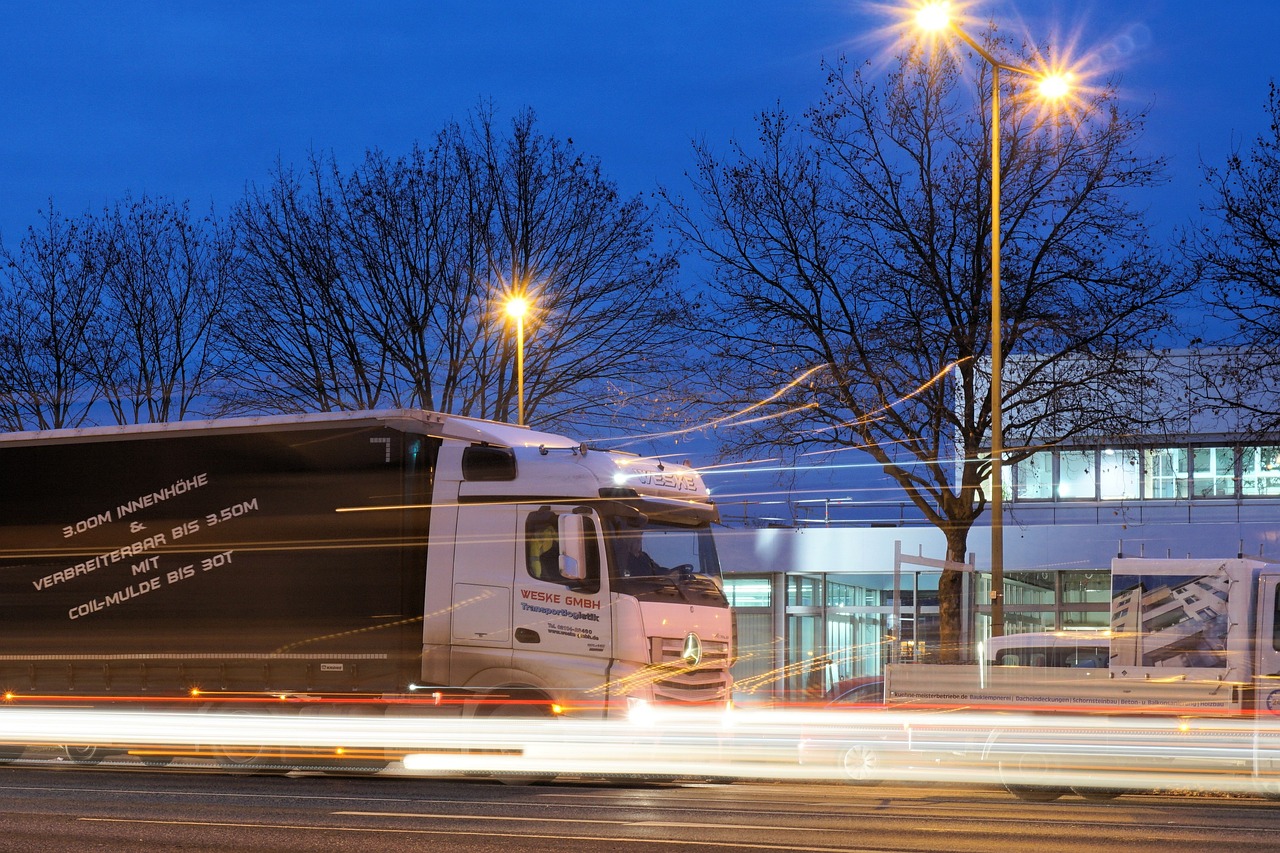
Logistics and Supply Chain Management
In the fast-paced world of modern warfare, the efficiency of logistics and supply chain management can make or break a mission. The U.S. Marine Corps has recognized this critical need and is increasingly turning to robotic autonomous systems to streamline these operations. Imagine a scenario where supplies are delivered to the front lines without putting human lives at risk. This is not science fiction; it's happening now, thanks to advancements in robotics.
Robotic systems help in various logistical tasks, from transporting equipment to managing inventory. The integration of these technologies allows for a more agile response to the dynamic needs of the battlefield. For instance, autonomous vehicles can navigate treacherous terrains, ensuring that vital supplies reach troops without delay. This capability not only enhances operational efficiency but also significantly reduces the logistical burden on personnel, allowing them to focus on their primary mission objectives.
Furthermore, the use of autonomous systems in logistics can lead to substantial cost savings. By automating the supply chain, the Marine Corps can reduce the number of personnel required for transportation and inventory management. This shift not only cuts costs but also minimizes the risk of human error, which can lead to delays and miscommunication. The result is a more reliable and responsive supply chain that can adapt to the unpredictable nature of warfare.
To illustrate the impact of robotic systems on logistics, consider the following table that outlines key benefits:
| Benefit | Description |
|---|---|
| Increased Efficiency | Robotic systems can operate continuously without fatigue, ensuring timely deliveries. |
| Enhanced Safety | Minimizes human exposure to danger by taking on high-risk transport missions. |
| Cost Reduction | Decreases the need for personnel and reduces operational costs. |
| Improved Accuracy | Automated systems reduce the likelihood of human error in logistics operations. |
However, the transition to a robotic-enhanced logistics system is not without its challenges. Technical issues such as battery life and terrain adaptability can hinder performance in the field. Moreover, the integration of these systems requires comprehensive training for personnel to ensure they can effectively manage and troubleshoot robotic operations. This training is crucial because, as we know, technology is only as good as the people who operate it.
As we look to the future, the role of robotic systems in logistics and supply chain management is poised to expand even further. Emerging technologies, such as artificial intelligence and machine learning, are expected to enhance these systems' capabilities, making them even more efficient and responsive. For the Marine Corps, this means that the logistical operations of tomorrow could be faster, safer, and more reliable than ever before.
- What types of robotic systems are currently used in logistics? The Marine Corps employs a variety of robotic vehicles and drones designed for transporting supplies and equipment.
- How do robotic systems improve safety in logistics? By taking on high-risk transport missions, these systems minimize the exposure of personnel to potential threats.
- What challenges do robotic systems face in logistics? Key challenges include battery life, terrain adaptability, and the need for specialized training for personnel.
- What is the future of robotic systems in the Marine Corps? The future looks promising, with advancements in AI and machine learning expected to enhance the capabilities of these systems significantly.

Challenges and Limitations of Robotic Systems
The integration of robotic autonomous systems within the U.S. Marine Corps has undoubtedly transformed modern warfare, but it doesn't come without its fair share of challenges and limitations. As these advanced technologies become more prevalent on the battlefield, several hurdles must be addressed to maximize their effectiveness and ensure safe operations. Understanding these challenges is crucial for the successful implementation of robotic systems in military settings.
One of the most significant technical challenges faced by the Marine Corps is the reliability of these systems in combat situations. For instance, robotic systems often struggle with issues related to battery life and terrain adaptability. Imagine a scenario where a robotic reconnaissance unit is deployed in a rugged environment; if its battery runs low or it cannot navigate the terrain effectively, the mission could be compromised. This limitation not only affects the operational success but also places additional stress on human operators who may need to intervene.
Moreover, the complexity of the systems poses another challenge. Robotic systems are often equipped with sophisticated software and hardware that require extensive training for personnel to operate effectively. The Marine Corps must invest time and resources in training, which can be a logistical burden. A well-trained operator is essential for ensuring that these systems perform as intended, but the rapid pace of technological advancements can make it difficult to keep training programs up to date.
In addition to technical challenges, there are also ethical considerations that cannot be overlooked. The use of autonomous systems in warfare raises questions about accountability and decision-making. For instance, if a robotic system makes a mistake that leads to unintended casualties, who is held responsible? This ambiguity can lead to significant moral dilemmas for military personnel and policymakers alike. As these systems become more autonomous, the potential for unintended consequences increases, making it essential to establish clear guidelines and protocols for their use.
Furthermore, the integration of robotic systems into existing military frameworks presents logistical challenges. Coordinating between human and robotic units requires a level of synchronization that is often difficult to achieve. The Marine Corps must develop new strategies to ensure that these systems complement rather than complicate operations. This includes addressing communication issues that can arise when robotic systems operate in environments with limited connectivity.
Despite these challenges, the potential benefits of robotic systems in the Marine Corps are undeniable. The key lies in overcoming these limitations through ongoing research, development, and training. By addressing the technical hurdles and ethical considerations, the Marine Corps can harness the full potential of robotic autonomous systems, ultimately enhancing mission success and protecting the lives of personnel on the battlefield.
- What are the main challenges of using robotic systems in the Marine Corps?
The main challenges include technical reliability, battery life, terrain adaptability, training requirements, ethical considerations, and logistical integration. - How does the Marine Corps address the ethical implications of robotic warfare?
The Marine Corps is focused on developing clear guidelines and protocols to ensure accountability and responsible use of robotic systems in combat situations. - What technologies are being developed to improve robotic systems?
Emerging technologies include enhanced sensors, improved battery life, and advanced AI algorithms that increase the adaptability and reliability of robotic systems.

Technical Challenges in Deployment
The deployment of robotic autonomous systems (RAS) within the U.S. Marine Corps presents a myriad of technical challenges that can significantly impact their operational effectiveness. While these systems promise enhanced capabilities on the battlefield, the reality of their integration is often fraught with obstacles that require careful consideration and innovative solutions.
One of the most pressing issues is battery life. Many robotic systems rely on batteries for power, and in combat scenarios, the ability to maintain operational readiness is crucial. Imagine a drone that can scout enemy positions but runs out of juice just when it’s needed most. The limitations in battery technology can lead to unexpected downtime, forcing units to rely on traditional methods that may not be as efficient or effective.
Additionally, terrain adaptability poses a significant challenge. The Marine Corps often operates in diverse environments, from sandy deserts to dense urban areas. Robotic systems must be able to navigate these varied terrains without becoming immobilized or damaged. For instance, a ground robot designed for flat surfaces may struggle in rocky or uneven landscapes, limiting its usability in certain operational contexts.
Moreover, system reliability is paramount. In the heat of battle, the last thing a Marine wants to deal with is a malfunctioning robotic unit. Technical failures can arise from software bugs, hardware wear and tear, or even environmental factors like dust and moisture. Ensuring that these systems are robust enough to withstand the rigors of combat is a continuous challenge that requires ongoing research and development.
To illustrate the complexity of these challenges, consider the following table that outlines some of the key technical issues faced by the Marine Corps in deploying robotic systems:
| Technical Challenge | Description | Potential Solutions |
|---|---|---|
| Battery Life | Limited operational time due to energy constraints. | Invest in advanced battery technologies and energy-efficient designs. |
| Terrain Adaptability | Difficulty navigating diverse and rugged environments. | Develop multi-terrain capabilities and adaptive locomotion systems. |
| System Reliability | Risk of technical failures during critical missions. | Implement rigorous testing protocols and regular maintenance schedules. |
In addition to the above challenges, there are also concerns regarding data security. As robotic systems become increasingly connected, they may be vulnerable to cyberattacks that could compromise their functionality or expose sensitive information. Ensuring robust cybersecurity measures is essential to protect these systems from malicious threats.
In conclusion, while robotic autonomous systems hold great promise for enhancing the capabilities of the U.S. Marine Corps, their deployment is not without significant technical challenges. Addressing issues such as battery life, terrain adaptability, system reliability, and data security will be crucial for the successful integration of these technologies into modern military operations.
- What are robotic autonomous systems?
Robotic autonomous systems are machines capable of performing tasks with minimal human intervention, utilizing advanced technologies such as artificial intelligence and machine learning. - What challenges do these systems face in combat?
Challenges include battery life limitations, terrain adaptability, system reliability, and data security concerns. - How can these challenges be addressed?
Potential solutions involve investing in advanced technologies, developing multi-terrain capabilities, and implementing rigorous testing and maintenance protocols.
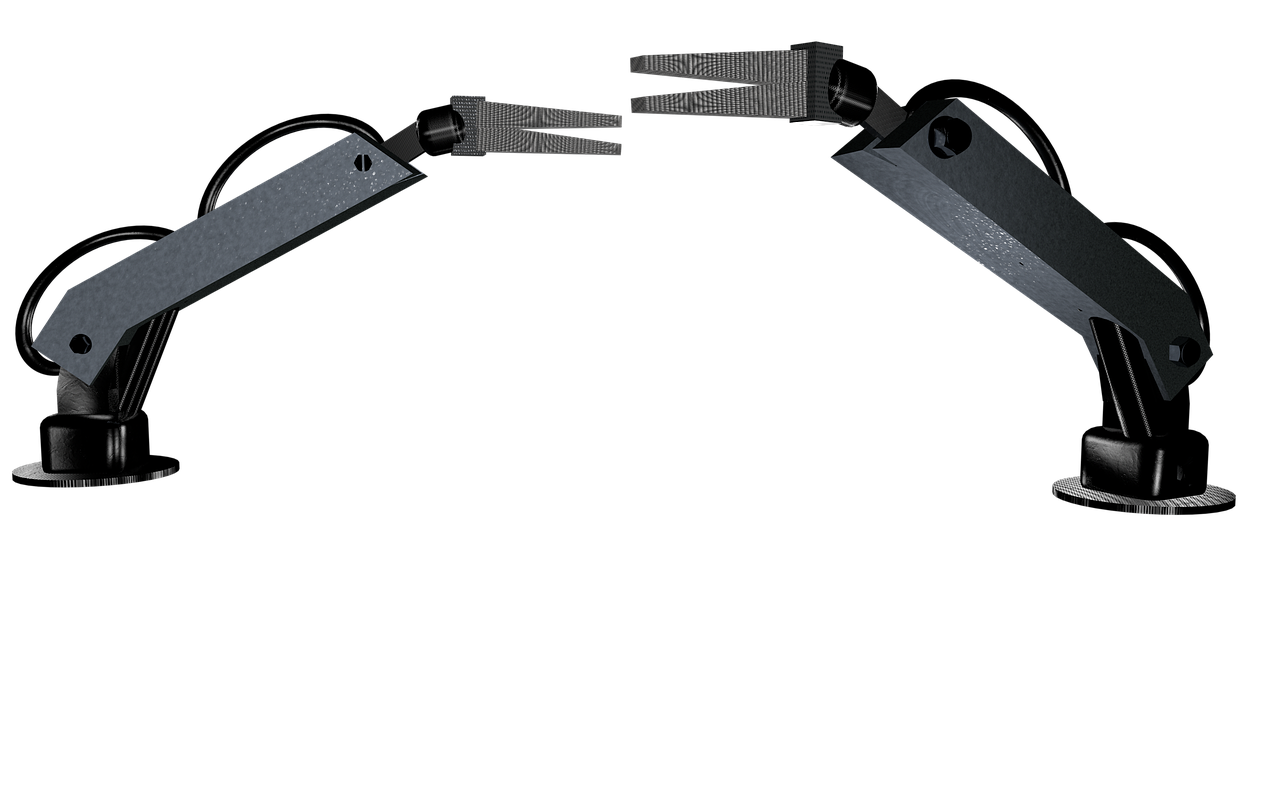
Ethical Considerations in Warfare
The integration of robotic autonomous systems within the U.S. Marine Corps has sparked a heated debate surrounding the ethical implications of their use in warfare. As we embrace these advanced technologies, we must ask ourselves: what does it mean to fight with machines that can operate independently? The ethical landscape of warfare is shifting, and with it comes a myriad of questions that challenge our traditional notions of accountability, decision-making, and the very essence of human judgment in combat.
One of the most pressing concerns is the issue of accountability. When a robotic system makes a decision that leads to civilian casualties, who is responsible? Is it the programmer, the military commander, or the machine itself? This ambiguity can lead to a dangerous precedent in warfare, where the lines of responsibility become blurred. The potential for unintended consequences raises alarms about the deployment of autonomous systems without stringent oversight and ethical frameworks in place.
Furthermore, the ability of these systems to make life-and-death decisions in high-stakes situations poses significant ethical dilemmas. Can we trust machines to make the right call in the chaos of battle? Unlike humans, robots lack empathy and moral reasoning. They operate on algorithms and data, which may not always capture the complexities of human emotions and ethical considerations. This raises the question: do we want machines to have the power to decide who lives and who dies?
To illustrate these concerns, consider the following ethical dilemmas associated with autonomous systems:
- Decision-Making Autonomy: Should robots be allowed to engage targets without human intervention?
- Collateral Damage: How do we mitigate the risk of civilian casualties when machines are involved in combat?
- Programming Bias: What happens if the algorithms used in these systems are biased or flawed?
These questions are not merely academic; they have real-world implications that could shape the future of warfare. As the Marine Corps continues to develop and integrate robotic systems, it is crucial to establish a robust ethical framework that addresses these challenges. This framework should include clear guidelines for accountability, training for personnel on ethical decision-making, and ongoing assessments of the technology's impact on warfare.
Moreover, the conversation around ethics in warfare must involve a broader dialogue with the public, ethicists, and technologists. The military cannot operate in a vacuum; understanding societal values and concerns is essential for maintaining trust and legitimacy. As we move forward, we must ensure that the deployment of robotic autonomous systems aligns with our moral principles and the values we hold dear as a society.
- What are the primary ethical concerns regarding autonomous weapons?
The main concerns include accountability for actions taken by machines, the potential for unintended civilian casualties, and the moral implications of allowing machines to make life-and-death decisions. - How can the military ensure ethical use of robotic systems?
Establishing clear guidelines, providing training on ethical decision-making, and engaging in public dialogue about these technologies are vital steps to ensure responsible use. - What role does human oversight play in autonomous systems?
Human oversight is crucial to ensure that machines operate within ethical boundaries and that decisions made by autonomous systems are subject to human review and accountability.

The Future of Robotic Autonomous Systems in the Marine Corps
The landscape of modern warfare is rapidly changing, and the U.S. Marine Corps is at the forefront of this evolution, particularly through the integration of robotic autonomous systems. As we look to the future, the potential for these systems to transform military operations is both exciting and daunting. Imagine a battlefield where drones and robotic units collaborate seamlessly, enhancing situational awareness and operational effectiveness. This vision is becoming increasingly attainable as technology advances.
Emerging technologies are paving the way for more sophisticated robotic systems. One of the most promising developments is in the realm of artificial intelligence (AI). With AI, robotic systems can learn from their environments, adapt to changing conditions, and make decisions with minimal human intervention. This capability could drastically reduce response times during critical operations, allowing Marines to maintain the upper hand against adversaries.
Furthermore, the integration of machine learning algorithms will enable these systems to analyze vast amounts of data from various sensors and sources. By synthesizing this information, robotic systems can provide commanders with actionable intelligence in real-time, enhancing decision-making and operational planning. The future Marine Corps could leverage these advancements to conduct more effective reconnaissance missions, optimize logistics, and even engage in combat scenarios where human presence is too risky.
In addition to AI, advancements in robotic mobility are set to revolutionize how these systems operate in diverse terrains. Future robots may be equipped with enhanced navigation systems that allow them to traverse rugged landscapes, urban environments, and even aquatic settings. This versatility will enable the Marine Corps to deploy robotic systems in a wider range of operational contexts, making them invaluable assets on the battlefield.
Moreover, the potential for swarm technology presents an exciting frontier. Imagine multiple drones working together in a coordinated fashion, overwhelming enemy defenses or gathering intelligence from various angles. This concept of swarm intelligence could lead to a significant tactical advantage, allowing the Marine Corps to execute complex missions with greater efficiency and reduced risk to personnel.
Despite these promising developments, it's crucial to address the challenges that lie ahead. As robotic systems become more prevalent, the Marine Corps must ensure that its personnel are adequately trained to operate and interact with these technologies. Comprehensive training programs will be essential to bridge the gap between human operators and autonomous systems, fostering a collaborative environment where both can thrive.
Additionally, ethical considerations surrounding the use of autonomous systems in warfare will continue to be a hot topic. The Marine Corps must navigate the delicate balance between leveraging technological advancements and maintaining accountability and ethical standards in combat. Questions surrounding decision-making authority and the potential for unintended consequences will need to be addressed as these systems become more autonomous.
In conclusion, the future of robotic autonomous systems in the U.S. Marine Corps is brimming with potential. As technologies advance, the capabilities of these systems will undoubtedly expand, leading to enhanced operational effectiveness and mission success. However, it is imperative that the Marine Corps remains vigilant in addressing the associated challenges, ensuring that the integration of these systems aligns with ethical standards and operational readiness.
- What are robotic autonomous systems?
Robotic autonomous systems are machines that can perform tasks without human intervention, using advanced technologies like AI and machine learning. - How do these systems benefit the Marine Corps?
They enhance operational efficiency, improve logistics, and reduce risks to personnel in high-threat environments. - What challenges do robotic systems face?
Challenges include technical limitations, ethical considerations, and the need for comprehensive personnel training. - What is swarm technology?
Swarm technology involves multiple robotic units working together to achieve a common goal, enhancing tactical advantages in operations. - How will training evolve with robotic systems?
Training will focus on integrating human operators with robotic systems, ensuring effective collaboration and operational success.
Frequently Asked Questions
- What are robotic autonomous systems?
Robotic autonomous systems are advanced machines capable of performing tasks without direct human intervention. In the context of the U.S. Marine Corps, these systems are designed to enhance operational efficiency, whether in reconnaissance, logistics, or combat support.
- How have robotic systems evolved in the Marine Corps?
The evolution of robotic systems in the Marine Corps has been marked by significant technological advancements. From early remote-controlled devices to sophisticated autonomous systems equipped with AI and advanced sensors, these technologies have transformed military operations over the years.
- What are the current applications of these systems in the Marine Corps?
Currently, the Marine Corps employs robotic systems for various applications, including reconnaissance missions, logistical support, and combat operations. These systems help improve mission outcomes by providing real-time data and reducing the risks faced by personnel.
- How do autonomous systems enhance reconnaissance and surveillance?
Autonomous systems enhance reconnaissance and surveillance by operating in high-risk environments where human presence may be dangerous. They gather crucial intelligence using advanced sensors and can relay information in real-time, significantly improving situational awareness for commanders.
- What challenges do the Marine Corps face in deploying robotic systems?
Deploying robotic systems comes with various challenges, including technical limitations such as battery life and terrain adaptability. Additionally, there are ethical considerations regarding their use in warfare, including accountability and decision-making processes.
- What are the ethical implications of using robotic systems in warfare?
The ethical implications of using robotic systems in warfare revolve around concerns about accountability for actions taken by these machines, the potential for unintended consequences, and the moral responsibilities of operators and commanders in making autonomous decisions.
- What does the future hold for robotic autonomous systems in the Marine Corps?
The future of robotic autonomous systems in the Marine Corps looks promising, with ongoing research and development focused on integrating emerging technologies. We can expect advancements that will further enhance their tactical applications, making them even more effective in modern warfare scenarios.








